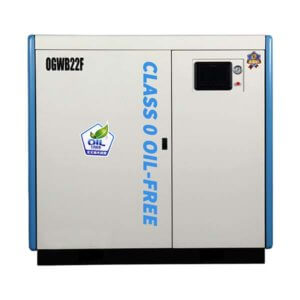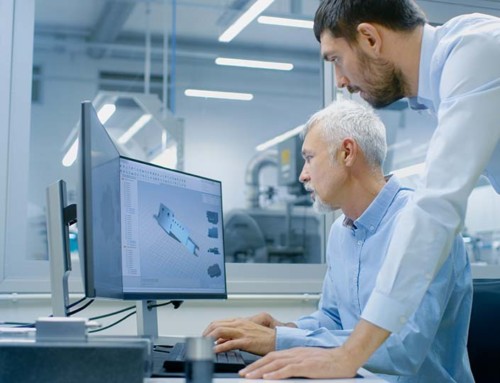Contents
Sometimes you face an issue of troubleshooting vibrations in the air compressor that may impede its normal functioning.
You can not find a cure for this problem without knowing its cause. Many external and internal factors are responsible for these vibrations.
Here we will discuss the common factors behind vibrations and possible solutions for them. So, you can evaluate your air compressor accordingly whenever you encounter any difficulty. Let’s give a brief view of it.
Faulty mounting bolts
Faulty mounting bolts
Mounting bolts is one of the major reasons for vibrations in the air compressor. If the mounting bolts are not tightened or steadied appropriately, your compressor will be unstable due to the involvement of shakes and matters. Following symptoms are associated with faulty mounting bolts
- Loose mounting bolts will give insufficient support to the compressor. Even a single loose bolt may disturb the overall balance. This problem can be simply solved by tightening the loose bolts or replacing them with another one.
- Another problem is unbalanced bolts. Make sure that every mount is putting together a substantial connection with the underlying surface.
- Unsteady and trembling surfaces can also cause vibrations in the air compressor. To avoid this problem, you need to shift the compressor to a place that is flat and smooth having no ridges or tilts.
Belts related problems
Belts related problems
Belts are an essential component of air compressors. Their main function is to govern the speed and tension corresponding components into an air compressor. The compressor will vibrate when these interior tensions are not suitably overseen.
Common belt related issues are:
- When you over tighten the belt, it will disturb the tension. Thereafter, the compressor will vibrate due to over rigidness in motor functions. In this case, you need to lose the belt at a normal level.
- Loose belts cause the different parts to move more rapidly, inflicting the compressor to tremble. Here, you have to tighten the belts for appropriate working.
- Elasticity and rubbery character are essential features of belts. However, dull and inelastic belts fail to regulate the speed and tension. This dullness may also result in the cracks of the belt. This error can be fixed by replacing the old belt with a new one.
Malfunctioning of flywheel and pulley
Malfunctioning of flywheel and pulley
The flywheel and pulley rely on each other. Damage in any of them will interrupt the functioning of both flywheel and pulley. So, we can say that vibrations are also possible due to the problems in the flywheel and pulley. Let’s see what these issues are:
- A loose pulley will not synchronize the movement of the flywheel. Replace this loose pulley with a firmer one to counter this trouble.
- Too tight a pulley will constrain the flywheel to change positions at the proper speed. Loosely tighten the pulley for the normal running of the flywheel.
- Hard and stiff pulleys may also produce vibrating sounds.
- Just like cracked belts, the cracked pulley is extremely disturbing for the air compressor. If you notice any crack, change the pulley instantly.
- A broken pulley will also suppress the operation of the compressor unless you replace it with a new one.
Problems associated with crankshaft
Problems associated with crankshaft
The crankshaft is used to bring out atmospheric air into the compression chamber of the air compressor. If there is any problem with the crankshaft, the air compressor will vibrate including several other issues as well. Vibrations due to crankshaft stem from the following problems:
- Leaned crankshaft resulting from the continual stresses of the compressor will cause the improper performance of the crankshaft.
- Corrosion of crankshaft metal will cause deformity and brittleness. This rusting will decay the metal and the crankshaft will not work properly. If you encounter rust within metal parts of the crankshaft, you have to fix it by replacing it.
Jammed crankshaft may offend the inner mechanisms of compressors. This problem can be tackled with the help of a professional person.
problems associated with bearings
problems associated with bearings
Bearings allow rollers to whirl inside the air compressor. Inhibition of bearings may create trouble for the rolling components. Besides, it will also impact the compressor entirely. Bearing noise and vibrations are two prominent sign marks of bearings inhibition. The main reasons behind bearing problems are:
- The greasing of bearings is an essential feature to avoid friction. However, when bearings are lubricated insufficiently, tension may ensue between the inner rollers and bearings, resulting in rust. To avoid this trouble, you should lubricate the bearings regularly.
- Overgreasing may also restrict the movement causing more complications.
- Rust formed on the bearings will affect the roller interior as well. This problem can be fixed by replacing the roller.
After reviewing the common reasons behind air compressor vibrations, we can say that it’s not a big deal to tackle them. Simply, you have to make an accurate check to see where the trouble is and how to solve it. We also have to share the main causes and possible solutions. You can set your air compressor accordingly.











Leave A Comment